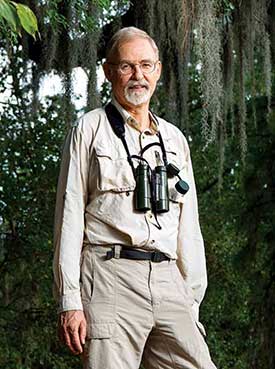Thomas Sherry has spent his career studying how nature works.
A Tulane professor of ecology and evolutionary biology, Sherry concentrates on birds, especially the diversity of species of tropical birds. He’s also Siegel Professor of Social Entrepreneurship at the Taylor Center for Social Innovation and Design Thinking and president-elect of the American Ornithological Society.
He’s dedicated to conservation biology. But, “I don’t think we can take care of the natural environment if we’re not taking care of the human environment.”
He works diligently in his classes to raise consciousness about issues of environmental, social and racial justice.































































